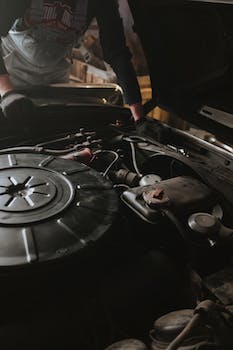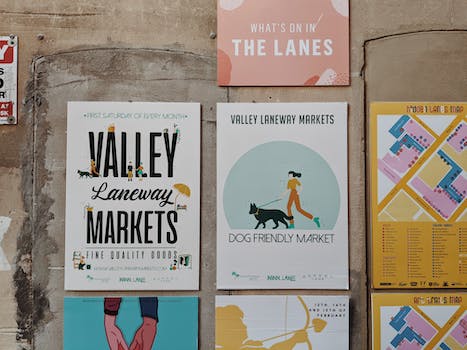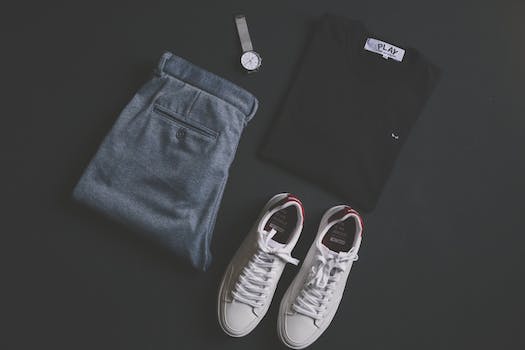

-
Table of Contents
From modesty to liberation, the empowering evolution of women's pants throughout history.
Introduction
Throughout history, women's pants have undergone a significant evolution, reflecting the changing roles and empowerment of women. From the early adoption of pants as a symbol of rebellion to the modern acceptance and versatility of various styles, the journey of women's pants highlights the progress made in gender equality and the breaking of societal norms. This article explores the empowering evolution of women's pants in history, showcasing the transformative impact they have had on women's fashion and liberation.
The Revolutionary Role of Women's Pants in the Suffragette Movement
The Empowering Evolution of Women's Pants in History
Throughout history, women have faced numerous challenges and restrictions when it comes to their clothing choices. One area where this has been particularly evident is in the realm of pants. For centuries, pants were considered exclusively male attire, and women who dared to wear them faced ridicule and even legal consequences. However, the suffragette movement of the late 19th and early 20th centuries played a pivotal role in challenging these norms and empowering women to embrace pants as a symbol of their fight for equality.
During the suffragette movement, women fought tirelessly for their right to vote and to be seen as equals in society. This fight extended beyond the political arena and into the realm of fashion. At the time, women were expected to adhere to strict dress codes that included long skirts and corsets, which severely limited their mobility and comfort. These restrictive garments were not only physically uncomfortable but also symbolized the societal constraints placed upon women.
Recognizing the need for change, suffragettes began to challenge these norms by adopting more practical and comfortable clothing options, including pants. By wearing pants, women were able to move more freely and engage in activities that were previously reserved for men. This act of defiance not only challenged societal expectations but also served as a visual representation of their fight for equality.
The suffragettes' adoption of pants was met with fierce opposition from both men and women who believed that women should adhere to traditional gender roles. Many viewed women wearing pants as a threat to the established order and a rejection of femininity. However, the suffragettes remained steadfast in their belief that clothing should not dictate a person's worth or capabilities.
The adoption of pants by suffragettes also had a significant impact on the perception of women's fashion. Prior to this movement, women's clothing was primarily designed to be visually appealing rather than functional. The suffragettes' embrace of pants challenged this notion and paved the way for more practical and comfortable clothing options for women.
The suffragette movement not only empowered women to wear pants but also inspired future generations of women to challenge societal norms and expectations. The fight for women's rights did not end with the suffragettes, and their legacy continues to shape the way women dress and express themselves today.
In conclusion, the suffragette movement played a revolutionary role in empowering women to embrace pants as a symbol of their fight for equality. By challenging societal norms and expectations, suffragettes paved the way for more practical and comfortable clothing options for women. Their defiance not only challenged the perception of women's fashion but also inspired future generations to challenge societal norms and fight for their rights. The evolution of women's pants throughout history is a testament to the power of clothing as a tool for empowerment and self-expression.
From Utility to Fashion: The Evolution of Women's Pants in the 20th Century

The 20th century witnessed a remarkable evolution in women's fashion, particularly when it comes to pants. From being primarily seen as a utilitarian garment to becoming a symbol of empowerment and liberation, the journey of women's pants is a testament to the changing roles and attitudes towards women in society.
In the early 1900s, women's fashion was dominated by restrictive and impractical clothing. Long skirts and corsets were the norm, limiting women's mobility and reinforcing traditional gender roles. However, as the century progressed, women began to challenge these societal norms and demand more freedom in their clothing choices.
The First World War played a significant role in this shift. With men leaving for the war, women were required to take on traditionally male roles in factories and other industries. This necessitated a change in their attire, as the impracticality of skirts and dresses became apparent. Women started wearing pants as a practical solution to their newfound responsibilities, often adopting men's clothing for its functionality.
However, it wasn't until the 1920s that women's pants truly began to make a fashion statement. The flapper era brought about a revolution in women's fashion, with shorter hemlines and looser silhouettes becoming popular. Designers like Coco Chanel and Elsa Schiaparelli embraced the trend and introduced pants as a fashionable alternative to skirts and dresses.
Despite this progress, societal attitudes towards women wearing pants remained conservative. Many establishments, including schools and workplaces, enforced strict dress codes that prohibited women from wearing pants. It wasn't until the 1960s and 1970s, during the second wave of feminism, that these restrictions began to loosen.
The feminist movement of the 1960s and 1970s sought to challenge traditional gender roles and fight for women's rights. Clothing became a powerful tool for self-expression and a means of challenging societal norms. Women began wearing pants as a symbol of their liberation and defiance against gender expectations.
The 1980s and 1990s saw a further blurring of gender boundaries in fashion. The rise of power dressing, popularized by influential women like Margaret Thatcher, brought tailored pantsuits into the mainstream. Women embraced the idea of dressing for success and used pantsuits as a way to assert their authority in male-dominated professions.
In recent years, the evolution of women's pants has continued, with a focus on inclusivity and diversity. Fashion designers have recognized the need for pants that cater to different body types and personal styles. From wide-leg trousers to skinny jeans, there is now a wide range of options available to women, allowing them to express themselves and feel confident in their clothing choices.
The empowering evolution of women's pants in the 20th century is a testament to the progress made in women's rights and the changing attitudes towards gender roles. From utility to fashion, pants have become a symbol of empowerment and liberation for women. As we move forward, it is important to continue challenging societal norms and embracing diversity in fashion, ensuring that all women have the freedom to express themselves through their clothing.
Breaking Barriers: How Women's Pants Redefined Gender Norms in the 21st Century
The Empowering Evolution of Women's Pants in History
Throughout history, women have faced numerous challenges when it comes to breaking gender norms and societal expectations. One area where this struggle has been particularly evident is in the realm of fashion. For centuries, women were expected to wear dresses and skirts, while pants were reserved exclusively for men. However, in the 21st century, women's pants have become a symbol of empowerment and a tool for breaking barriers.
The journey towards women embracing pants as a fashion choice began in the early 20th century. In the 1920s, the flapper movement emerged, challenging traditional gender roles and advocating for women's liberation. This era saw women donning loose-fitting trousers, known as "Oxford bags," as a statement of rebellion against societal norms. Although these pants were still relatively conservative compared to modern styles, they marked the beginning of a shift towards greater freedom of choice in women's fashion.
As the decades progressed, women's pants continued to evolve, reflecting the changing attitudes towards gender roles. In the 1940s, during World War II, women entered the workforce in large numbers to support the war effort. This necessitated practical and comfortable clothing, leading to the popularization of women's trousers known as "slacks." These pants were often high-waisted and wide-legged, allowing women to move freely and perform physically demanding tasks. The acceptance of slacks during this time was a significant step towards breaking down gender barriers and challenging the notion that women should be confined to skirts and dresses.
However, it wasn't until the 1960s and 1970s that women's pants truly began to redefine gender norms. The feminist movement gained momentum during this period, advocating for equal rights and opportunities for women. As part of this movement, women embraced pants as a symbol of liberation and equality. The iconic image of women wearing bell-bottom jeans and wide-legged trousers became synonymous with the fight for women's rights. Pants became a powerful tool for challenging societal expectations and asserting women's autonomy over their bodies and choices.
In the 21st century, women's pants have become an integral part of mainstream fashion, breaking down gender barriers in ways unimaginable in the past. Today, women have a vast array of pant styles to choose from, ranging from skinny jeans to tailored trousers to athleisure wear. This diversity of options allows women to express their individuality and personal style, free from the constraints of traditional gender norms.
The acceptance and popularity of women's pants in the 21st century can be attributed to the tireless efforts of countless individuals and organizations that have fought for gender equality. Fashion designers, activists, and everyday women have all played a role in challenging societal expectations and redefining what it means to be a woman in the modern world.
In conclusion, the evolution of women's pants throughout history reflects the ongoing struggle for gender equality. From the rebellious flappers of the 1920s to the feminist movement of the 1960s and 1970s, women have used pants as a tool for breaking down barriers and asserting their autonomy. In the 21st century, women's pants have become a symbol of empowerment, allowing women to express their individuality and challenge traditional gender norms. As we continue to strive for a more inclusive and equal society, the evolution of women's pants serves as a reminder of the progress we have made and the work that still lies ahead.
Q&A
1. How have women's pants evolved throughout history?
Women's pants have evolved from being considered unconventional and controversial in the early 20th century to becoming widely accepted and popular in modern times.
2. When did women start wearing pants?
Women started wearing pants more commonly in the early 20th century, with the trend gaining momentum during World War II when women took on traditionally male roles in the workforce.
3. What impact did the evolution of women's pants have on society?
The evolution of women's pants has had a significant impact on society, challenging traditional gender norms and promoting gender equality by providing women with more freedom of movement and expression.
Conclusion
In conclusion, the evolution of women's pants throughout history has been empowering. From the early adoption of pants as a symbol of liberation and equality, to the various styles and designs that have emerged over time, women's pants have played a significant role in challenging societal norms and promoting gender equality. The increasing acceptance and popularity of women wearing pants in various settings reflect the progress made in breaking down gender barriers and empowering women to express themselves freely.







